The Rise and Fall of Bowler
Since 1985 the name Bowler has been linked to fast rally raid Land Rover derived transport. We take a look at the history of Bowler and the interesting vehicles it has produced.
Words and Pictures by Ian Garner
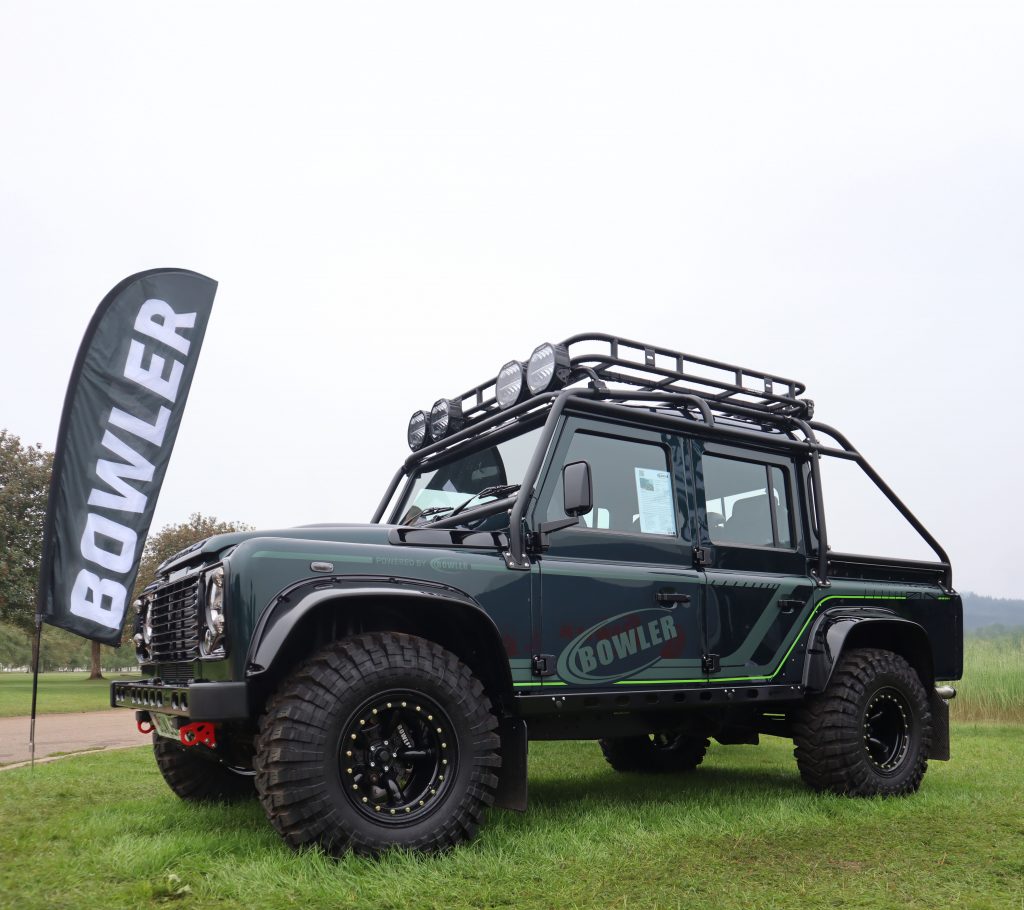
Ever since a well-known TV presenter declared himself a driving deity behind the wheel of a Bowler Wildcat whilst driving around Tixover quarry, the name Bowler was thrust into the wider world. But where did it all start?
Bowler started back in 1985 with founder Drew Bowler creating off road competition vehicles based on the under pinning’s of the coil sprung Range Rover. Land Rover engines and transmissions would be mounted onto modified chassis. Initially these were based on the 88” wheelbase and called the Tomcat, but at least one was made with an 86” wheelbase. As time progress and experience gathered, the Tomcat evolved to a 100” wheelbase. The Tomcat design was sold on in 1999, and the Wildcat was introduced. With a similar 100” wheelbase to the Tomcat, the spaceframe chassis was all new. The styling of the Wildcat was instantly recognised as being influence by Land Rover, however. Different power options were available but the one to have, was the 5 litre TVR tuned Rover V8. The Wildcat was popular for Rally raids and by 2005 Bowlers factory Dakar team was only second in size to the works Mitsubishi team.
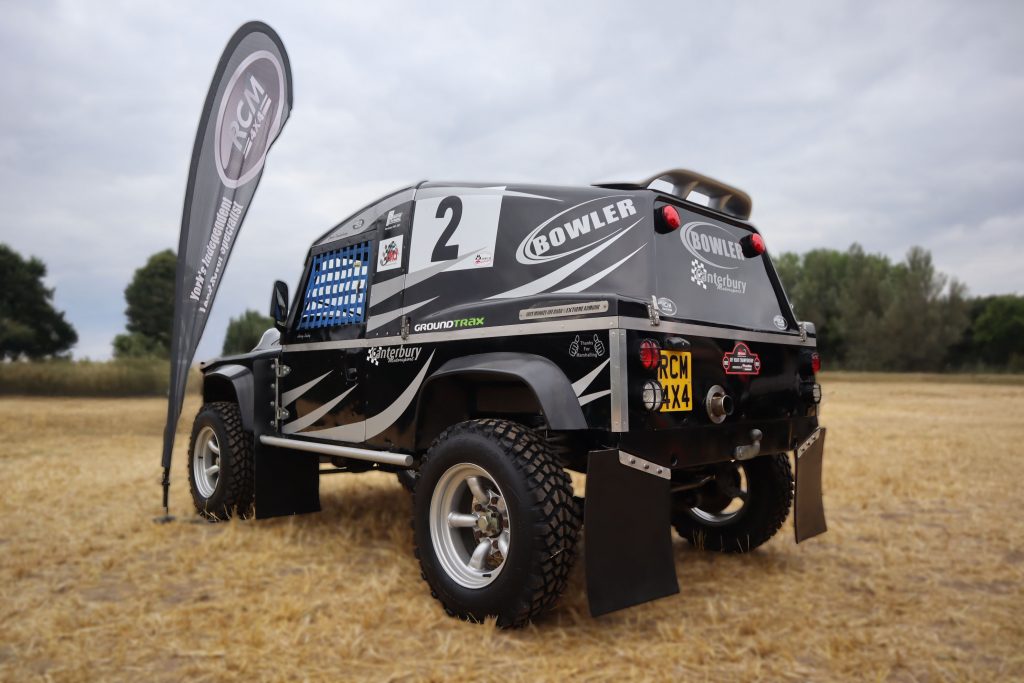
Above – A Bowler Tomcat looking purposeful at the York Land Rover show.
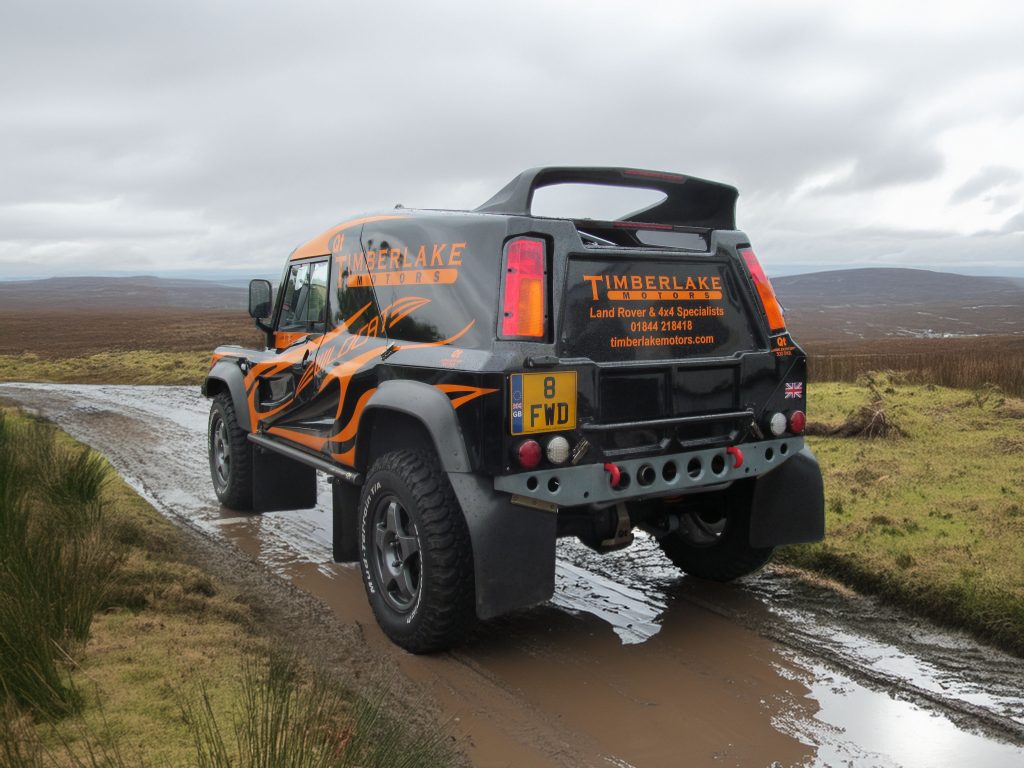
Above – The next iteration was the Wildcat. Although similar in appearance to the Tomcat it was a huge leap forward.
The next vehicle produced by Bowler was the prettiest, in my opinion at least, the Nemesis, later called the EXR. This was a compact 3 door vehicle whose styling was derived from the Range Rover Sport that had been launched several years earlier. Built to FIA T1 specifications the EXR was limited to 300 bhp and 582 NM of torque from its JLR derived V8 5-litre engine. For the first time in its history Bowler turned its attention to a road going vehicle for the public (As long as the public had a spare £155K) and the EXR-S was born. Featuring the 5-litre supercharged V8 from JLR, it boasted 550 bhp. Mated to a 6-speed automatic gearbox and with styling cues from a Range Rover Sport the vehicle looked good and had the performance to match. 0-60 takes 4.2 seconds and the top speed is limited to 155 mph, which for a 1800kg car was fantastic.
Below – A 2014 Defender Challenge vehicle doing demonstration laps at the LRO show.
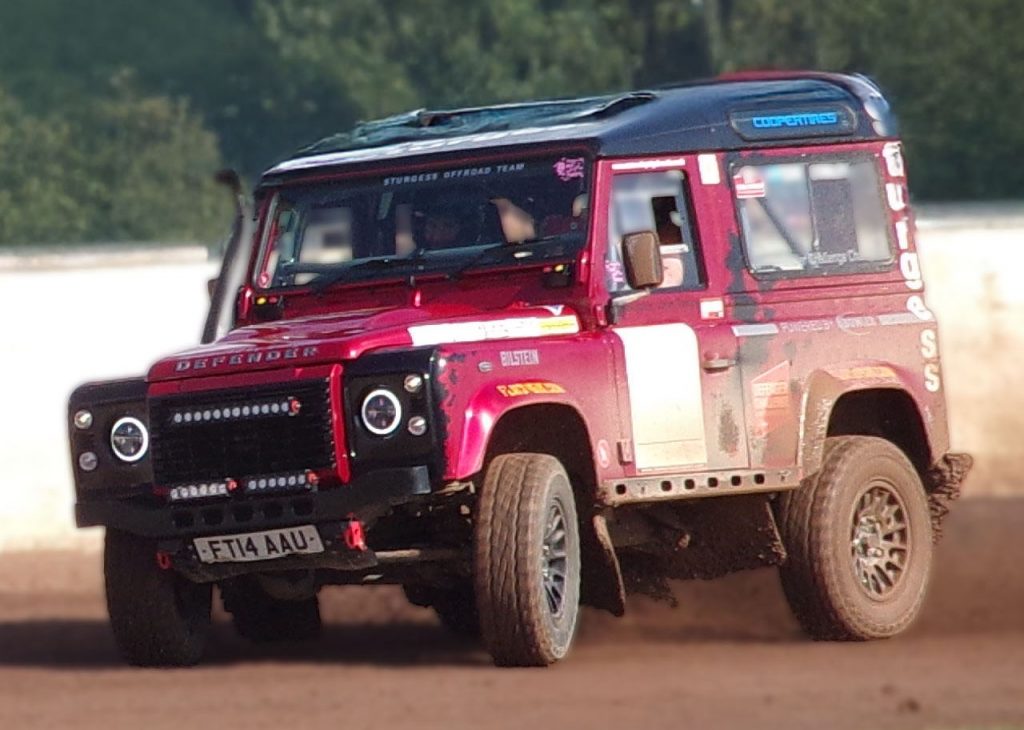
Announced in 2012, Bowler and Land Rover forms an official partnership and began on a very interesting plan indeed. The “Defender challenge”. If you had the money, you could purchase a Bowler prepared Defender 90 and take part in a series of rallies through 2014 with full factory support. Stating with a basic Puma Defender, Bowler worked their magic and fiddled with the suspension and steering. The engine was also tuned giving 170 bhp over the standard vehicles 122 bhp. Specially developed lightweight alloy wheels and an optional brake enhancement were also available. The Defender challenge ran until 2016 when the Defenders demise brought the series to an end.
During this time Bowler also produced a development vehicle, the Double cab. According to one insider it was developed to see how much manageable power a coils sprung live axle set up could take. Bowler put a 3 litre V6 supercharged petrol engine under the bonnet and mated it to an 8-speed automatic gearbox. According to one test driver I spoke too, 400 bhp was about the limit. Have you noticed that the Works V8 featured in last month’s edition has 405 bhp? Coincidence? Who knows.
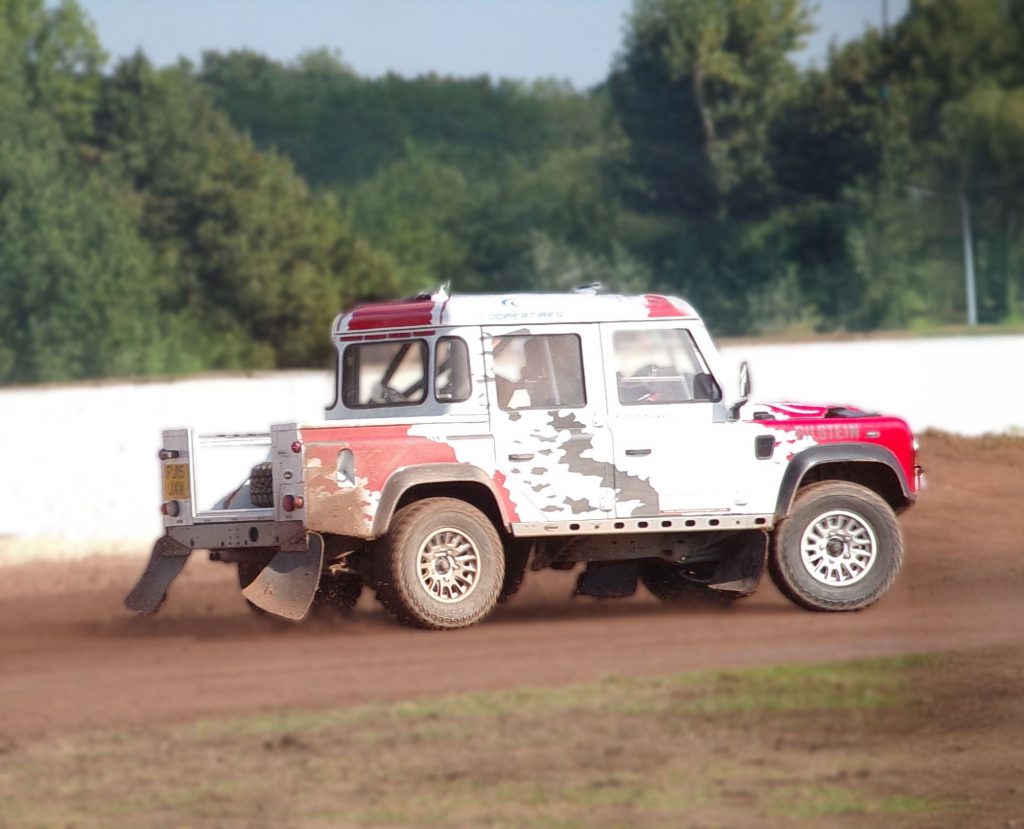
Above – The Double Cab development vehicle kicking up dust on the track
After the Defender challenge ended, Bowler started to offer the upgrades to other Defender drivers. Steering, suspension, brakes and engine could all be modified in a similar way to the rally vehicles. These enhancements were available for both 90 and 110 Land Rovers. If the owner was brave enough the engine could have the stage 2 pack which gave 195 bhp. In addition to the mechanical modifications, external embellishments were also available. Those lightweight alloys, new front bumper and sills were all available.
In 2016, Bowler started work on its next development, called the Cross Sector Platform or CSP. This was a light strong space frame that was to underpin the Bowler Bulldog and future developments. The Bulldog was the next rally raid vehicle and from a distance looked like a Defender 110 double cab, however those flared arches told a different story. Unlike the live axles of the last development Double Cab, the Bulldog featured an independent suspension set up derived from the Range Rover Sport. Under the bonnet you could have either a single turbo diesel engine, but most would opt for the fire breathing 3 litre V6 supercharged petrol, both engines were mated to an 8-speed auto box. Power was fed to the wheels via a torque biasing centre differential and limited slip differentials.
Below – The Bulldog had a lot wider stance than a Defender thanks to its Range Rover sport derived suspension.
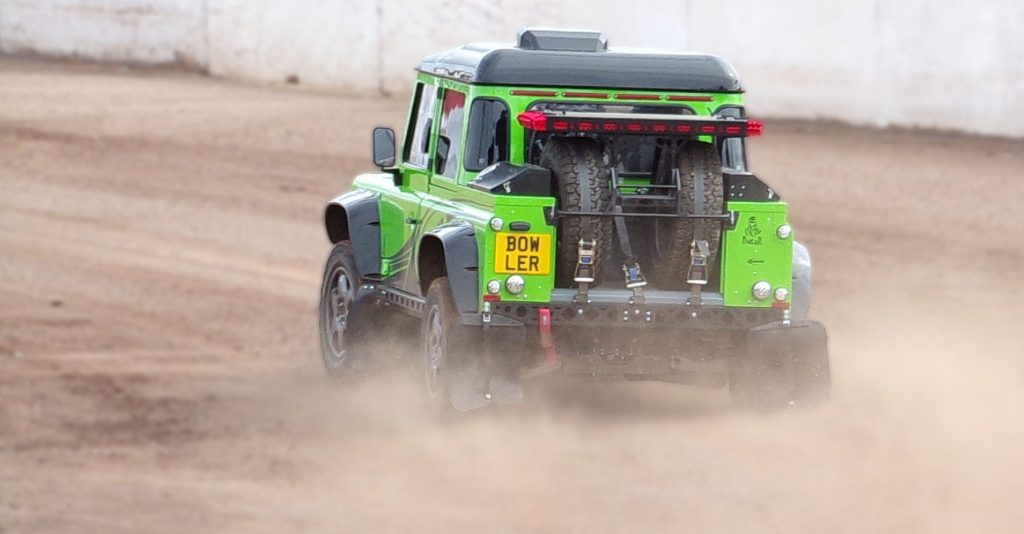
In 2019, Land Rover officially took over Bowler and it was placed under the wing of the Special Vehicle Operations division. This meant that Bowler now had full use of the wider Land Rover resource. After the L663 Defender was launched, Bowler started developing the next generation Defender Challenge vehicles. This time they were based on the P300 Defender 90. Raised suspension gave a higher ride height than the standard coil sprung 90 and was upgraded to take the pounding a rally car would get. The Defender challenge also got paddle shift gear changes, something that was not available on the standard P300.
Right – The L663 Defender challenge Land Rover also got something special in the form of the Bowler Switch. This would set the vehicle up for rallies by changing the traction control and stability computers to “fun” mode.
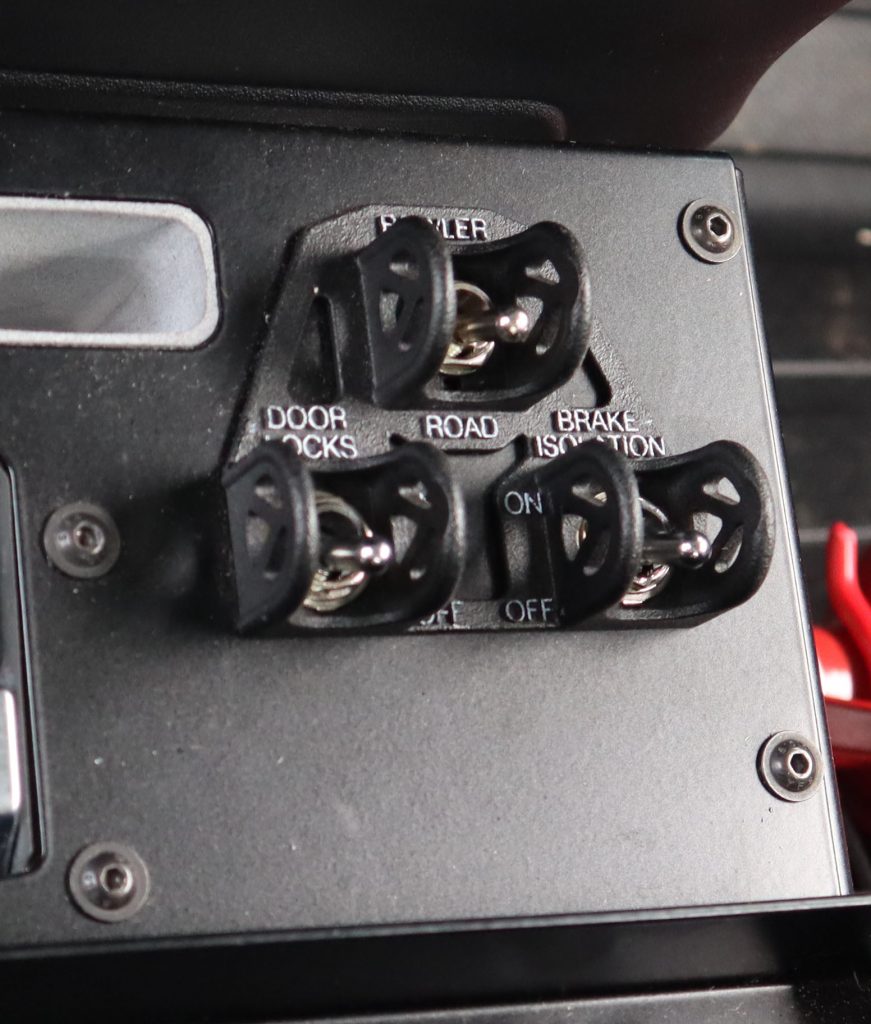
Below – The L663 Defender Challenge was based on a P300 Defender 90
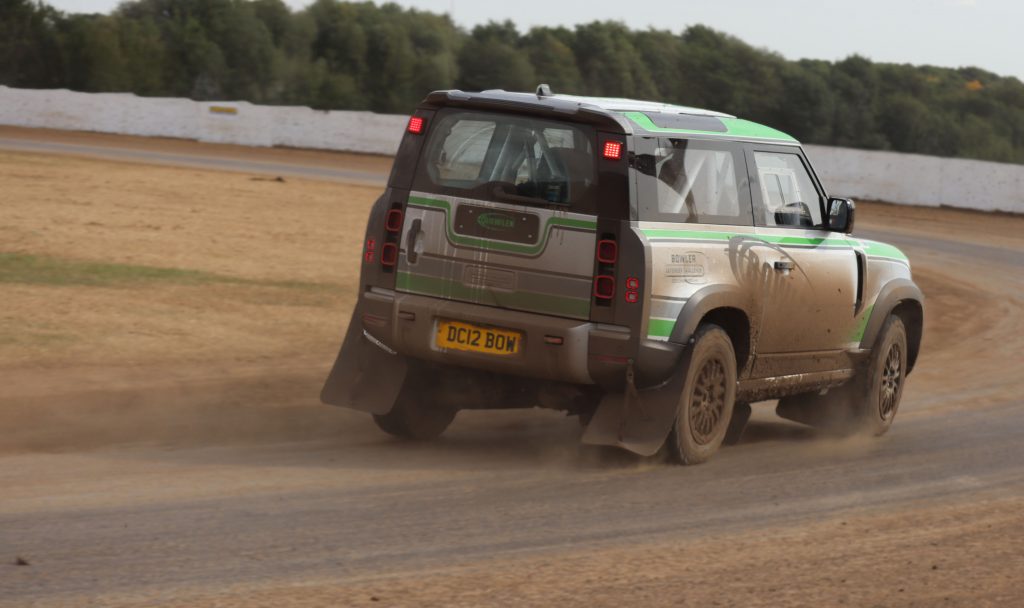
November 2020 saw an announcement that excited most Land Rover fans. Bowler was to bring back a licensed version of the original Defender 110, albeit with a Bowler flavour. Based on the same independent suspension set up as the Bulldog and fitted with a 575 bhp supercharged V8 engine it was to be called the CSP575. The order book was supposed to be opened in 2021, but alas only a handful of prototypes were made before the project was quietly shelved. I was fortunate to visit the Bowler factory and see prototype no 2 in the metal, although was banned at the time from taking photos. It looked amazing, purposeful and brutal. When it started up the sound was evocative, and hairs stood proud on my neck.
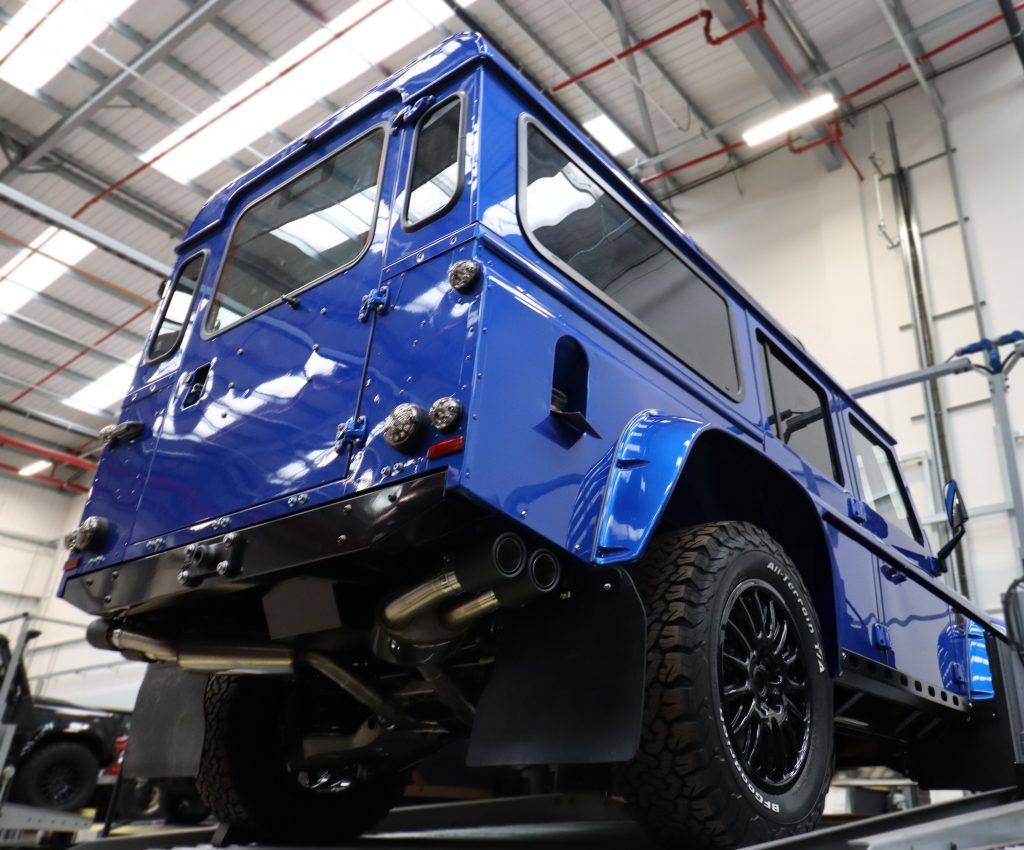
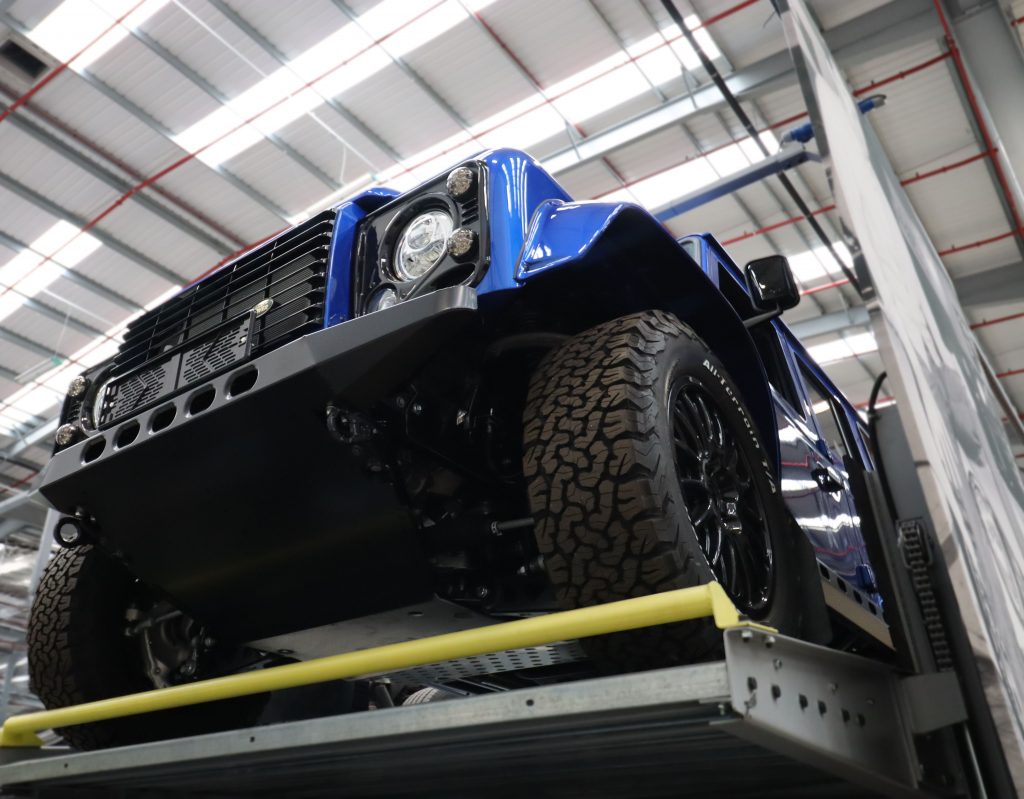
Above – A hand full of CSP575s are now stored at Land Rovers heritage collection.
The final chapter in Bowler’s history was announced in October 2024, when the Bowler factory in Belper, Derbyshire were entering 28 days consultation and was to close. Staff were, when applicable, offered roles in JLR and the knowledge was to move to Land Rover Classic works. Sad indeed, but Land Rover, are a business to make money and sometimes difficult decisions must be made.
